To accompany the recent article about keeping chickens for eggs and meat, I’ve written this article to share some tips and recommendations for keeping goats. Aside from their outrageously fun personalities and the companionship they can provide, goats are also immensely useful for their production of milk, meat, mohair, cashmere, and natural fertilizer.
Raising goats is advantageous because these animals are relatively small, thus they require less pasture and food to remain healthy and productive. Indeed, like urban backyard chickens, many cities and towns permit homeowners to keep goats, so the urban farmer or prepper can also raise and benefit from these animals.
In a more rural or countryside location, goats can also be rotated between pastures and their dung can be naturally spread out or collected and concentrated for use as organic fertilizer on your food crops.
In terms of milk production, goat milk has been rising in popularity in recent years and with good reason. Known for its lower lactose content, goat milk is generally easier to digest and can be used in making yogurt, butter, ice cream and other dairy products as well as soap. Although the flavor of the milk often varies from breed to breed and from goat to goat, some of the most popular breeds of dairy goat include:
- The Alpine goat, also frequently known as the French Alpine due to its roots in the French Alps, is a very popular breed for milking, known for relatively high yields of 1 – 2 gallons a day. With an average butterfat content of approximately 3.5%, they produce a thicker, creamier milk that can be used to make butter, cheese, ice creams and even soap.
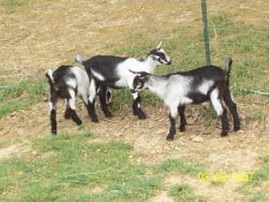
- The Oberhasli goat, known by many as the Swiss Alpine, is a very old and popular breed of dairy goat that originally hails from Switzerland. Milk production from this breed generally ranges from ½ -1 ½ gallons per day with butterfat content of 2 – 3% and the does are known for their sweet, intelligent temperaments.

- The Nubian, also known as the Anglo-Nubian, is a breed known to produce rich, creamy milk with the highest butterfat content (5% on average) of any breed. Nubian goats are generally slightly heavier and meatier than other dairy breeds, as well, so they serve well as a dual-purpose breed, with milk production between ½ – 1 ½ gallons per day.
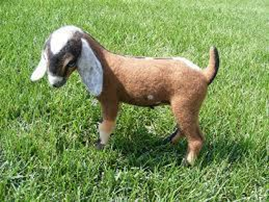
- The Saanen is an archetypal breed of white and cream-colored goats that originated in Switzerland; they are one of the largest of dairy breeds, with females generally weighing 150 pounds or more and bucks reaching 200+ lbs. at maturity. Common as commercial milking goats, this breed can serve as a dual-purpose meat producer and they are popular as pets and in showmanship rings for their calm, well-mannered personalities. Saanen does produce an average of 1 gallon of milk per day, with butterfat of 2.5 – 3%.

A good dairy goat gets better with age, as well, both in quality and quantity of the milk she produces. A yearling doe who has just had her first kid, for instance, won’t produce as much milk as a more mature 3 or 4 year old doe who has been bred two or three times. Finally, if you keep an intact buck for breeding purposes, be sure to keep him away from your milk herd. Intact male goats produce a strong, characteristic odor that affects the flavor of your doe’s milk.
Most dairy breeds serve well as dual-purpose meat producers, so you can raise and slaughter unwanted or unneeded males and females who don’t produce well or aren’t good mothers. If you’re specifically interested in a fast-growing breed for meat production, though, here are some of the top breeds that have been selectively bred for meat production:
- The Boer goat is one of the most popular of all breeds for meat production. With bucks growing to between 240 – 300 pounds at maturity, the Boer can also be crossbred with Nubian, Alpine, Oberhasli, Angora and Kiko goats to produce offspring with varying growth rates, meat production and increased milk production. Boer goats are hardy, resistant to disease and prolifically reproductive, especially after their first breeding.

- The Kiko goat breed originated in the 1980s in New Zealand when two companies began experimenting with crossing feral New Zealand goats with domestic dairy breeds. After many years of selective breeding, the result is the fast-growing, hardy breed known as the Kiko. This breed adapts well to most climates and has also been crossbred with other meat producing breeds to take advantage of its low maintenance and resilience as a breed.
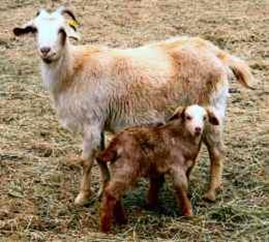
- The Kinder goat breed originated in 1985 when two Nubian does were first crossed with a pygmy goat. Thanks to their pygmy heritage, kinder goats can breed at any time of the year, and they are known for being a great dual-purpose meat and dairy producer. The milk from kinder does is sweet and known for high butterfat content (often 5 – 7%) and more milk solids, making it ideal for butter, cheese and soap making.
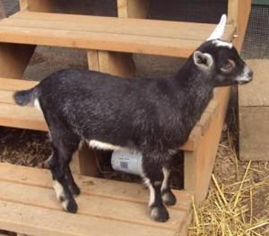
And if companionship, meat and milk production aren’t enough to convince you of how versatile and useful goats are, there are several breeds that have been raised for fiber production. The fine wool from goats is known as mohair, while cashmere also comes from specially bred goats. As some of the finest, most expensive wool in the world, mohair and cashmere are prized for textile use. Some of the best breeds for mohair or cashmere production include:
- The Cashmere goat is a broad term that refers to any breed of goat that produces cashmere wool (the very soft, downy inner wool of their winter coat) of fine quality and large quantity. Cashmere goat breeds are most commonly found throughout Asia, including in China, India, Mongolia and Tibet.
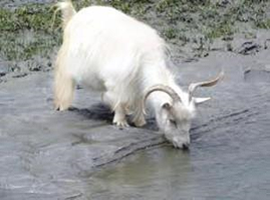
- The Angora goat traditionally hails from Turkey, and is known for its production of ample quantities of very fine mohair. Shorn twice a year, angora goats generally produce 8 – 12 pounds of mohair each year, but their wool production can be severely curtailed by poor diet or lack of proper mineral supplementation.
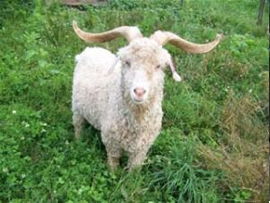
- The Pygora is a hybrid breed that resulted from the crossbreeding of angora goats with pygmy goats, thus giving the goats a smaller and more compact stature with greater fiber and wool production capability. Small and compact (mature does generally weigh 65 – 75 pounds, with mature bucks weighing between 75 – 100 lbs. Most pygora goats are kept for their fiber production, but they can also be milked and will produce ¼ – ½ a gallon of milk per day; they are also very friendly and intelligent.
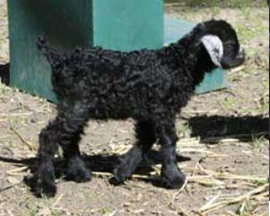
- The Nigora is a great dual-purpose breed that produces marketable quality and quantities of fleece as well as a decent quality and quantity of milk. Generally crossed between miniature dairy goats of Swiss descent and fiber producing goats such as a cashmere breed or an angora goat, the nigora breed are a medium-sized goat with friendly and sociable personalities that make them ideal for family pets, companionship and small scale farming or self-sufficiency operations.
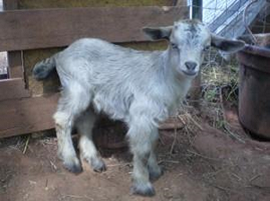
All goat breeds are known for their curiosity and intelligence, though, so be prepared to reinforce your fence if they discover weak spots. Most breeds live between 10 – 20 years naturally, with prime slaughter age for meat goats generally being anywhere from 6 months – 2 or 3 years.
Does who have been in the milking herd for several years may produce good milk for upwards of 4 – 6 years or longer, but repeated breeding shortens a doe’s lifespan to 8 – 10 years on average.
Whether you raise your goatherd for meat, milk, and/or mohair or cashmere production, your goats can also serve you well in clearing new land for agricultural use.
Goats of all breeds are renowned for their foraging behavior; natural browsers, goats actually prefer many weeds to traditional grasses and hays, so you can set your herd on a patch of poison ivy or thorny blackberries and they’ll steadfastly munch away on all that unwanted plant matter.
In addition to clearing the unwanted brush, your goatherd will also deposit rich, natural fertilizer in the form of their dung. Meanwhile, their cloven hooves will prevent them from packing the soil down too much. With their complimentary tastes, goats and sheep can also be grazed in mixed groups; while the goats devour brambles and weeds, the sheep will focus on the grasses.
This article has been written by Gaia Rady for Survivopedia.
© Survivopedia.com




























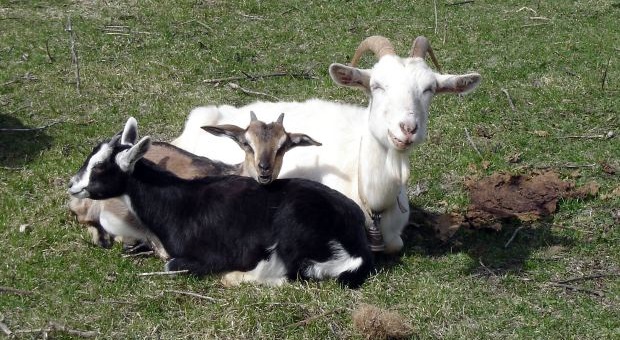








































GREAT ARTICLE ON THE GOATS.I HAVE HAD NUBIANS FOR YEARS.GREAT PETS AND MILK PRODUCTION AND THEIR MILK DOES NOT HAVE A TANG AS SOME OF THE OTHERS, FOR WHAT IT IS WORTH STARTED RASING MALLARD DUCKS FOR EGGS.THEIR EGGS ARE JUST AS GOOD AS CHICKENS AND THEY LAY AS GOOD AS ANY CHICKEN I HAVE. DM
I would like to see an article about killing, butchering, and dressing out goat, deer, elk, rabbit, etc and storing it for future use
Go to amazon.com they have an inexpensive book on slaughtering animals.
There are a bunch of PDF files available online for FREE about this, too. (No need to pay for them via Amazon.) There are also YouTube videos about it. e.g. watch the YouTube videos now, while you can. Save & print the PDF files for future reference/refreshers.
Peace.
How can you kill such helpless creatures of god, unless in an absolute last ditch survival emergency? Stock up on food and grow your own vegetarian food. You won’t have much time in real bad scenario anyway to be hunting or dressing out animals unless you also want to be hunted ?
.
Hey, you forgot my breed the LaMancha!
I agree with most of the article. But the Boer does not tend to do well in areas with moist ground. The parasites and foot rot tend to be the biggest problems. In East Texas they do fine but along the coast it is not economical to raise them for meat due to the amount of medication to keep them alive.
I have Kikos and do cross with Boer males but the males have problems with the conditions. It is cheaper to doctor 3 males than 50 females so I no longer have any high (50% and above) percentage females on my place.
Enjoyed the article (as well as the one about chickens, too.)
Goats are great if you have sufficient space for them, and friendly neighbors and such. For a bit more cost-effective meat alterative, think RABBITS!!!
Nope, they don’t provide rabbit milk. But, as a meat/protein source, they are EXCELLENT, efficient, and easy. Heck, you can even raise them indoors (to avoid detection by noisy neighbors.) Your breeders can even be litterbox trained. Plus, you don’t have to worry as much about keeping the butchered meat long-term stored. (e.g. just butcher as many as you need.) Whereas, butchering a goat, sheep, hog, or cow can require almost an entire freezer to keep preserved.
Again, ENJOYED the goat article!!! Just wanted to let people know that there are smaller-sized, more-efficient options available, too. 🙂
Peace.
I want to thank you so much! I have long been interested in learning how to raise goats! Thanks again 🙂
Just wanna say that this is handy, Thanks for taking your time to write this.
Wish you had included Nigerian dwarfs.